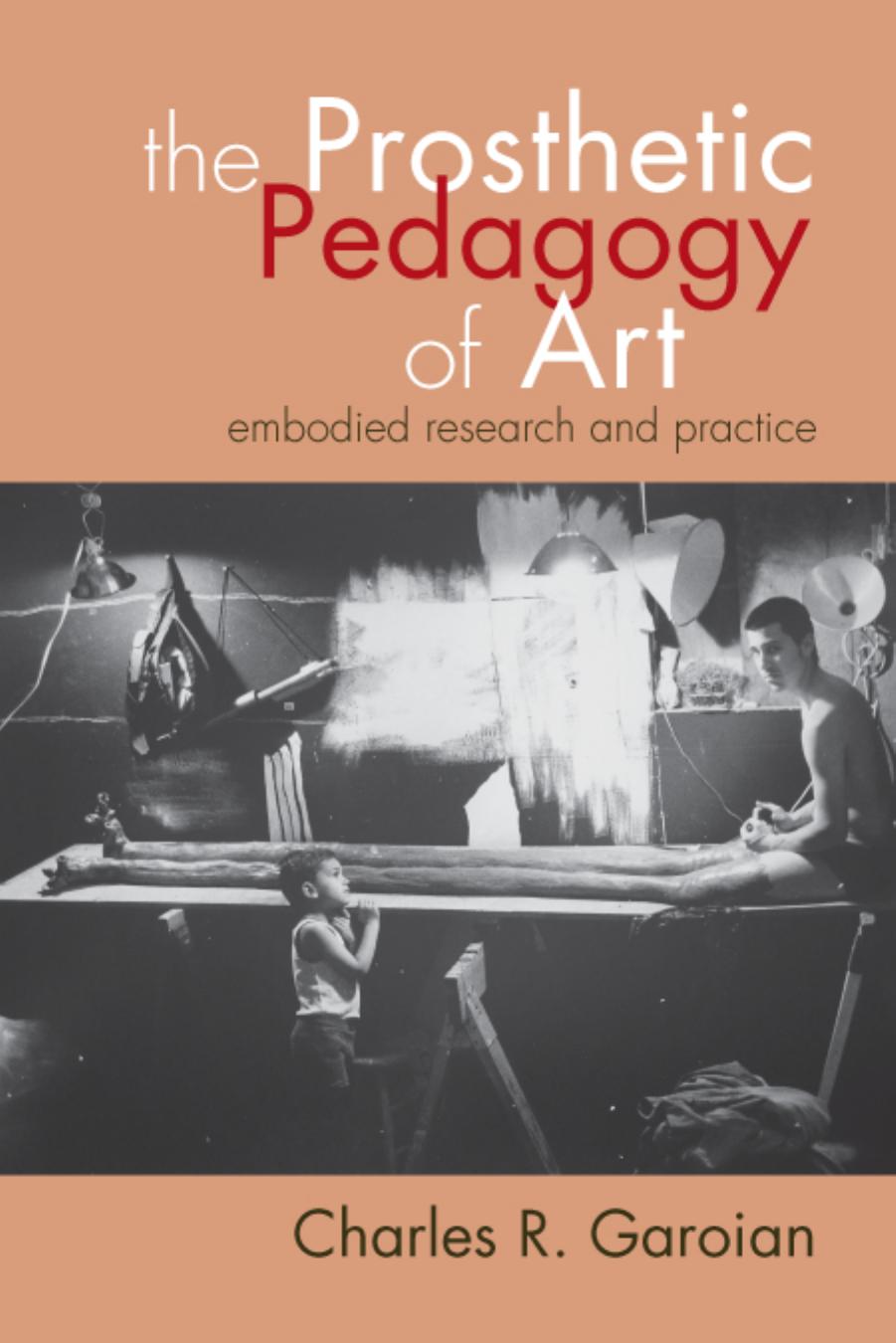The Prosthetic Pedagogy of Art by Garoian Charles R

Author:Garoian, Charles R. [Garoian]
Language: eng
Format: epub, pdf
ISBN: 9781438445489
Publisher: State University of New York Press
Published: 2013-01-16T16:00:00+00:00
Figure 5.2. Joseph Kosuth, One and Three Chairs, 1965, The Museum of Modern Art, New York, NY, © 2012 Artists Rights Society (ARS), New York.
This third space of slippage, argues Homi Bhabha, is “unrepresentable in itself, [that it] constitutes the discursive conditions of enunciation that ensure that the meaning and symbols of culture have no primordial unity or fixity; that even the same signs can be appropriated, translated, rehistoricized and read anew” (Bhabha 1994, 37). The ambiguity and incompleteness of Bhabha's third space constitute the discursive conditions of prosthetic pedagogy where the totalized bodies of knowledge in schools and museums are brought into question. By presuming sole authorship and ownership of knowledge, these institutions practice what architectural theorist Robert Harbison refers to as the “museumifying” of memory and cultural history (Harbison 1977, 145).
The dialectic of prosthesis is constituted by transgressive and transformative embodiment. Its radical epistemology is predicated on abjection: the horror of disparate, foreign bodies of knowledge, and the contiguity and conjoining of the familiar with the strange, the known with the unknown, and the self with the other. Literary critic Julia Kristeva writes, “We may call it a border; [yet] abjection is above all ambiguity. Because, while releasing a hold, it does not radically cut off the subject from what threatens it—on the contrary, abjection acknowledges it to be in perpetual danger” (Kristeva 1982, 9; italics added). The associative power of prosthetic knowing and understanding is always already prone to slippage, teetering, and on the verge of collapse. Its multivalent, precarious characteristics are constituted by “perpetual dangers” that ensure mutability between and among differing categories of knowledge and understanding. Its epistemological eccentricity is released through hazarding a risk, through creative and intellectual exploration, experimentation, and improvisation: the research potential of art practice in schools and museums.
In characterizing the abject, ambiguous relationship of prosthetic embodiment, literary theorist Clark Hulse distinguishes between the “visual technology” of reading an artwork and the “verbal technology [of interpretation] … [which] operates in some parasitic relation to the artifact which is the host” (Hulse 2000, 148).
We may imagine [for example] that reading a portrait [of a boy] proceeds toward the making of verbal meaning but does not stop there. It proceeds from significance to the aesthetic, from the aesthetic to the prosthetic, that is, from the [image of the] boy to its significance, from the significance to the recognition that when meaning is joined to the body it becomes more meaningful; then to scorn for the unperfected body which needed such verbal additions; and then to the realization that the verbal addition of meaning is itself “merely” a [parasitic] technology, which leads at least to a revulsion against reading, a return to the body. The technology of reading may begin in the semiotic impulse [of signification], but it ends in a reversal of semiotics; its movement is cyclical, from the body as word to the word as body. (151; italics added)
Download
The Prosthetic Pedagogy of Art by Garoian Charles R.pdf
This site does not store any files on its server. We only index and link to content provided by other sites. Please contact the content providers to delete copyright contents if any and email us, we'll remove relevant links or contents immediately.
The Art of Coaching Workbook by Elena Aguilar(50984)
Trainspotting by Irvine Welsh(21518)
Twilight of the Idols With the Antichrist and Ecce Homo by Friedrich Nietzsche(18501)
Fangirl by Rainbow Rowell(9095)
Periodization Training for Sports by Tudor Bompa(8170)
Change Your Questions, Change Your Life by Marilee Adams(7634)
This Is How You Lose Her by Junot Diaz(6794)
Asking the Right Questions: A Guide to Critical Thinking by M. Neil Browne & Stuart M. Keeley(5632)
Grit by Angela Duckworth(5521)
Red Sparrow by Jason Matthews(5390)
Paper Towns by Green John(5087)
Room 212 by Kate Stewart(5035)
Ken Follett - World without end by Ken Follett(4644)
Housekeeping by Marilynne Robinson(4343)
The Sports Rules Book by Human Kinetics(4290)
Double Down (Diary of a Wimpy Kid Book 11) by Jeff Kinney(4206)
Papillon (English) by Henri Charrière(4195)
The Motorcycle Diaries by Ernesto Che Guevara(4009)
Exercise Technique Manual for Resistance Training by National Strength & Conditioning Association(3955)
